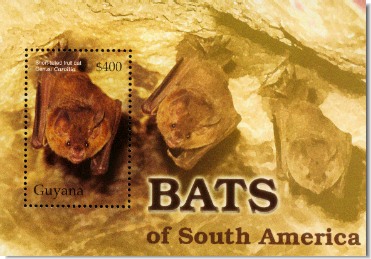In a season of growing concern about the West Nile Virus, a mysterious illness that has killed millions of mosquito-eating bats has added to the worry about that infection, and about bats in general. It’s called white nose syndrome, a fungal growth on the noses and wings of many species of bats, some of them already endangered. It was first observed in a cave in New York in 2006 and has spread throughout much of the northeastern United States. “It moved into Virginia in ’09. We have our first two documented caves in ’09,” said Jeff Trollinger, Deputy Director for Statewide Resources, Bureau of Wildlife Resources at the Virginia Department of Game and Inland Fisheries. “It has been growing extremely fast. “We don’t know what causes it and we’re not even sure the fungus itself is what is actually killing the bats,” Trollinger added. Scientists believe the fungus may interrupt hibernation, leaving the mammals too weak and thin to survive.
Could this be a cyclical condition that will correct itself? “It’s occurred in European bats for many years, but doesn’t seem to be deadly to a lot of European bats,” Trollinger said. “In the United States it’s a fairly new occurrence. This may be something that runs a cycle. We just don’t know. It hasn’t been here long enough to actually figure out.” Virginia game experts and scientists are testing bats, checking caves and doing overall population surveys. The mass casualties were found in Breathing Cave in Bath County and Clover Hollow Cave in Giles County. Fear of infection spreading has closed many caves along Virginia’s line of mountains. Infected caves throughout the east have seen as much as a 95 percent mortality rate. Scientists studying the problem fear “there may be some transmission that cavers, when they go into one cave they pick up the fungus and transport it to another cave,” Trollinger said. While many people fear bats, only tiny number of them, way less than one percent, get rabies. They eat tons of insects in Virginia every year, including mosquitoes that can carry diseases. “What you’re looking at is one of your major predators for our insect population is now taking a nosedive in population,” Trollinger said. “You look things like disease transmission from insects – could be a real problem.” At this point, it appears the infection largely hits those bats that hibernate in vast colonies in the colder mountainous climes that have caves and mines. Bats in the Richmond metro area don’t seem to be affected, but scientists aren’t sure how the mysterious problem will continue to migrate.
Source: CBS, 23 August 2012
http://wtvr.com/2012/08/28/mysterious-illness-killing-bats-could-it-add…

- Log in to post comments
